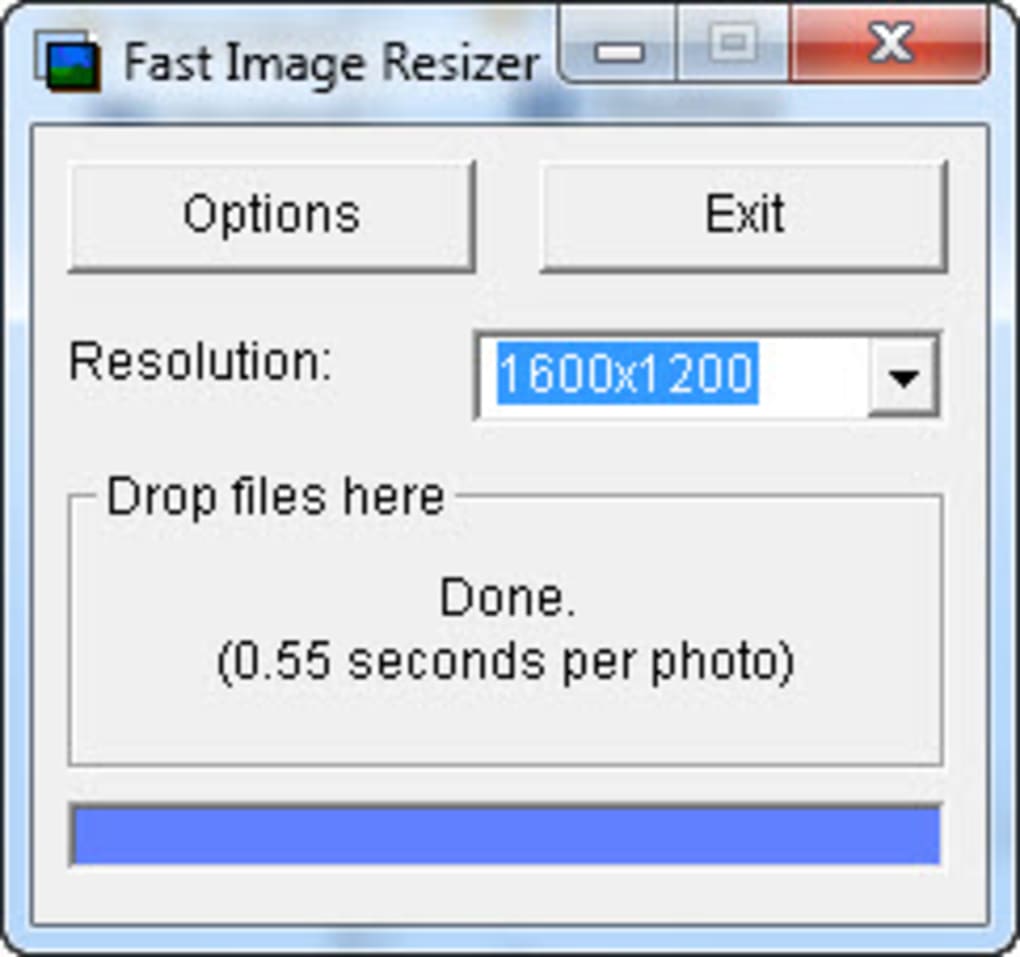

The laser cuts a disc-shaped piece within the cornea. 4 During SMILE, a surgeon uses a femtosecond laser to adjust the shape of the cornea.

Small incision lenticule extraction (SMILE) is also a laser-based refractive surgery. Small Incision Lenticule Extraction (SMILE) Although it may differ based on the facility and other factors, expect to pay about $1,800 to $5,000.Īdditionally, your insurance coverage might leverage some costs. The cost of the LASEK procedure is almost similar to LASIK and PRK. Prolonged recovery period that can last between 6 and 9 months.Possibility of undercorrection or overcorrection.More pain and discomfort compared to LASIK.Want to eliminate the need for eyeglasses or contacts.
#Alternatives to iresizer free#
Are free of diseases, such as diabetes or rheumatoid arthritis, that may interfere with healing. Aren’t taking certain medications, such as steroids, that can affect healing. Don’t have certain eye diseases, such as cataracts or glaucoma. Have a stable vision for at least 1 year. It's held into position by a contact lens to facilitate healing. The corneal shape is altered using the excimer laser, and the epithelial flap is replaced. 3ĭuring LASEK, the epithelium is removed and softened with a diluted alcohol solution. LASEK is ideal for people with thin corneas, a factor that disqualifies them from LASIK surgery. Laser epithelial keratomileusis, or LASEK, is similar to both LASIK and PRK. The exact cost of PRK depends on several factors, including your provider, location, and pre- and post-care services provided, among others. You might have to cover a portion on your own. Similar to LASIK, though, your vision insurance will likely cover some of the costs of initial examinations. Require bandage contact lenses to cover the eyes until you recoverīecause PRK is considered elective surgery, it is unlikely insurance will cover it. Might create worse vision than before ( loss of best-corrected vision). Risk of under-correction or overcorrection. Corneal haze (cloudiness in the cornea). Glare and halos around lights, especially at night. Don't have underlying diseases, such as diabetes, that can affect healing. PRK is an excellent option for patients with thin corneas and those prone to dry eyes. LASIK also requires a thick cornea, while PRK does not. PRK is different from LASIK, which requires cutting into the cornea to make a foldable flap. Removing this layer exposes the cornea for treatment with an excimer laser. 2 This is the thin top layer of the cornea. Photorefractive keratectomy (PRK) is a vision correction surgery and a LASIK alternative.ĭuring PRK eye surgery, the corneal epithelium is removed. Luckily, there are alternatives to LASIK that can help you achieve perfect vision.īelow are the five best alternatives: 1. Other factors such as age, eye diseases, and general health might also disqualify you from LASIK. This procedure isn’t possible if you have thin corneas. The corneal flap is a piece of the cornea that is cut and briefly folded back to allow for laser treatment. LASIK surgery requires a thick cornea to create a corneal flap. For example, LASIK won't work if you have thin corneas. 
However, not everyone with vision problems is a good candidate for LASIK eye surgery. Today, 95% of LASIK beneficiaries report positive results many years down the line. Since its FDA approval in 1999, LASIK has undergone various developments to make it safer and increase its chances of success. LASIK eye surgery is one of several revolutionary treatments for visual problems. Thinking about LASIK? Start a conversation with an experienced Patient Counselor to find out if laser eye surgery is right for you. RLE is permanent and can correct farsightedness, nearsightedness, and astigmatism. Refractive lens exchange (RLE) is similar to cataract surgery, but is actually for those without cataracts. Or, they may also be placed between the cornea and iris. Phakic intraocular lenses (IOLs) are artificial lenses placed behind the iris and in front of the natural lens to correct vision.

Intraocular lens implants (IOLs) are artificial lenses implanted to replace the natural lens. Small incision lenticule extraction (SMILE)is a highly specialized procedure that removes a disc-shaped piece of the cornea (lenticule) to reshape it. Laser epithelial keratomileusis (LASEK) is a minimally invasive procedure that involves making an epithelial flap instead of a thicker corneal flap. It's an excellent alternative for people with thin corneas. Photorefractive keratectomy (PRK) is a minimally invasive and doesn’t involve making a corneal flap with an excimer laser.








 0 kommentar(er)
0 kommentar(er)
